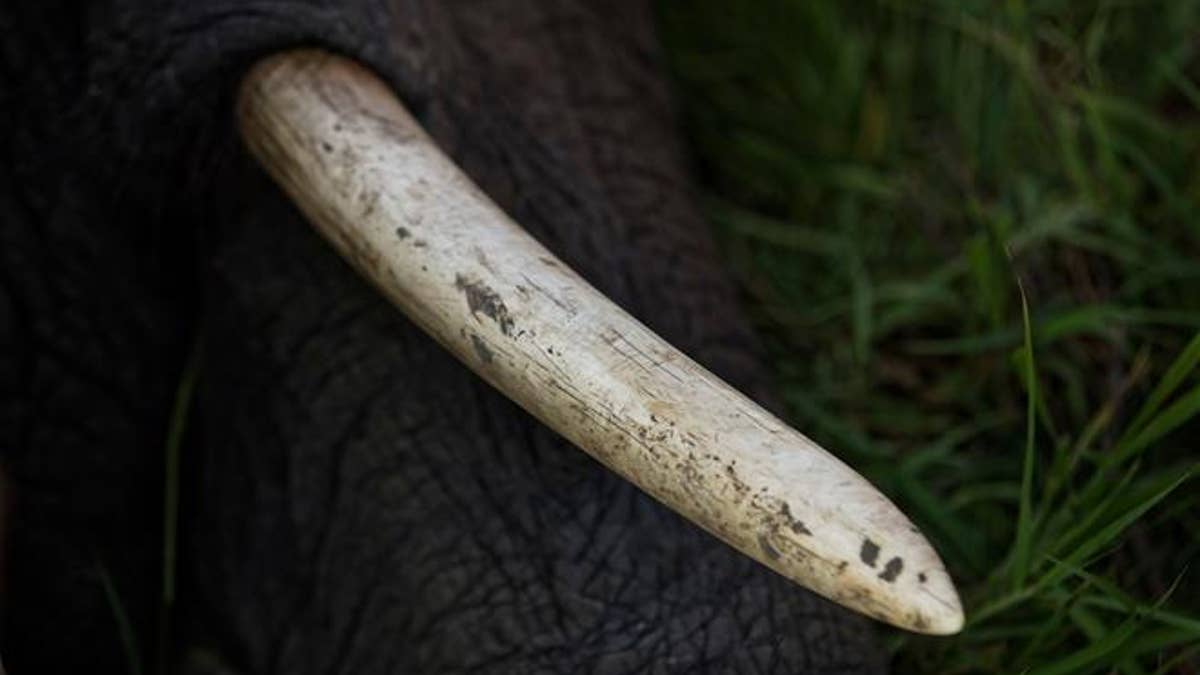
In this photo taken Wednesday, March 21, 2018, the tusk of a tranquilized elephant is seen during an operation to attach GPS tracking collars in Mikumi National Park, Tanzania. (AP Photo/Ben Curtis)
How can elephants fend off ivory poachers? By never growing tusks at all. Some 32% of female elephants in Mozambique's Gorongosa National Park are now born tuskless—a far cry from the 2% to 4% naturally occurring in Africa's wild, per research published in National Geographic.
Thousands of Gorongosa elephants were slaughtered for ivory to fund the nation's long civil war, leaving just 200 females, half of whom are tuskless; now their female offspring are following suit.
Numbers are worse in South Africa's Addo Elephant Park, where 98% of all female pachyderms—mothers and daughters alike—were reportedly tuskless in the early 'naughts. The "consequences of such dramatic changes in elephant populations are only just beginning to be explored," says a behavioral ecologist.
Elephants use tusks for various things, like debarking trees for food and digging for minerals—yet tuskless elephants are surviving. Scientists are curious how they adapt, perhaps by widening home ranges to gather more recoverable foods.
"I've observed tuskless elephants feeding on bark, and they're able to strip bark with their trunks, and sometimes they use their teeth," says a researcher. One head-scratcher is why females are inheriting tusklessness, when the X chromosome, which carries genes for various traits, also goes from mother to son.
"But we don't see that," says an evolutionary biologist. "Tuskless males are extremely rare in African elephants." Another factoid: It's nothing new. Scientists say Asian elephants also evolved to lose their tusks or grow smaller ones, per the New York Times.
(And elephants aren't only killed for their ivory.)
This article originally appeared on Newser: Elephants Have Bad News for Poachers: We Evolve